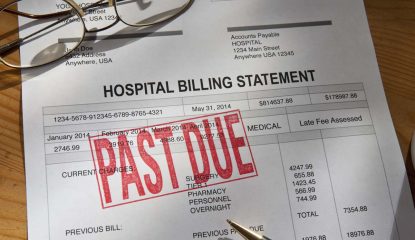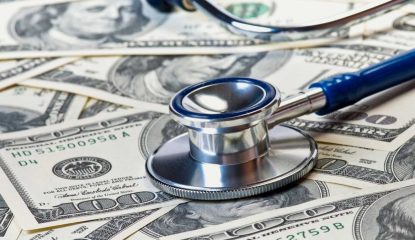Nonprofits, Government Agencies, and Credit Bureaus Are Taking Action to Address Medical Debt
By Consumers for Quality Care, on October 23, 2024

Medical debt affects millions of Americans, but a recent shift in how medical debt is perceived from both the public and private sector may bring about some much needed relief for consumers, according to The Atlantic.
Two in five Americans have some form of medical debt. A lack of price transparency in the country’s health care system has led to many consumers being unsure of how much a medical procedure or service will cost until after they receive the bill. When bills go unpaid, they are often sent to debt collectors that engage in predatory practices, such as harassing consumers by phone and sending intimidating notices by mail. These debts then appear on credit reports, which can prevent consumers from getting a job, buying a car, or applying for a home loan. “Our credit reporting system is too often used as a tool to coerce and extort patients into paying medical bills they may not even owe,” according to Rohit Chopra, the Director of the Consumer Financial Protection Bureau (CFPB).
Medical debt disproportionally affects lower-income consumers and those with chronic conditions, such as cancer. Many Americans with medical debt are forced to forgo necessities like food or skip or delay seeking medical care for fear of going further into debt. Even consumers with health insurance are not immune from falling into medical debt.
But now, efforts are underway that aim to address this crisis. Nonprofit organizations like Undue Medical Debt (formerly RIP Medical Debt) raise money to purchase medical debt directly from hospital systems for pennies on the dollar and then notify consumers that their medical debts have been forgiven. To date, they have erased over $14 billion in medical debt owed by 8.6 million Americans. Credit bureaus have also changed how they report medical debt on credit reports. State governments have passed consumer friendly laws that prohibit any medical debt from appearing on credit reports and restrict hospital systems from garnishing wages or placing liens against homes for those with medical debt. In addition to these efforts, the CFPB recently proposed a new rule that would prohibit any medical debt from appearing on consumer credit reports, which would wipe away nearly $49 billion from 15 million consumer credit reports.
While these efforts are a strong step forward, more institutional changes are needed to address the prevalence of medical debt. Consumers are often unaware of how much a procedure or service will cost, and hospital systems often intentionally hide these costs or fail to assist low-income consumers eligible for reduced or free care. While many Americans have some form of health insurance, many of these plans come with high premiums, high out-of-pocket costs, or both. According to Sara R. Collins of the Commonwealth Fund, medical debt can be attributed in large part to the fact that many consumers are “underinsured, with high deductibles or high out-of-pocket costs relative to their income.”
CQC applauds efforts to forgive medical debt for millions of Americans, but also urges elected leaders to take further action to protect consumers and address the root causes of the medical debt crisis.




